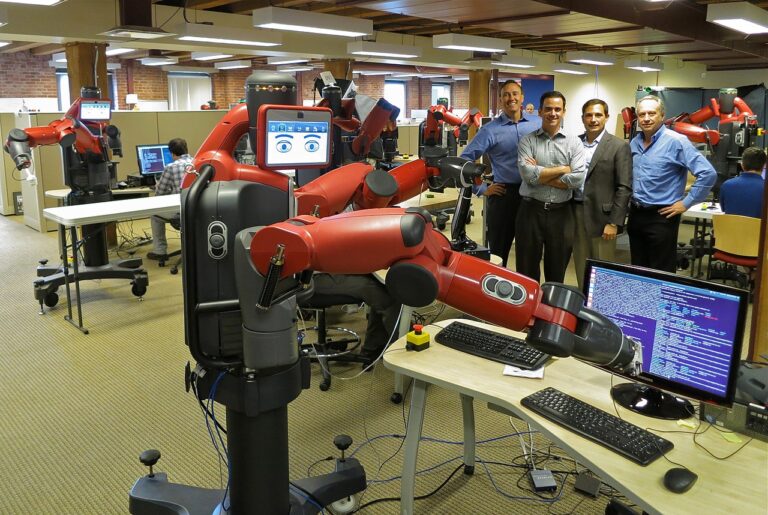
Cynthia Estlund is the Crystal Eastman Professor of Law at the New York University School of Law.
Cynthia Estlund is the Catherine A. Rein Professor at the New York University School of Law, and a longtime teacher and scholar of labor and employment law. This post is the final installment in a three-part series. Read the first two parts here and here.
Automation and Work: A Path Forward in the Face of Uncertainty
For over a century, workers and their organizations have struggled to raise labor standards and expand employee rights and benefits. Whatever the benefits to workers and the society, to any one private firm those laws represent a tax on employing human labor, and part of the calculus in decisions to contract out work or to replace people with machines. A logical though dispiriting response to plausible predictions of escalating net job losses would be to find ways to unburden the employment relationship.
There are arguments against any such response to the automation threat, and I discuss them in my paper. But they are partial and qualified. If we remain concerned (as I do) that labor and employment laws are contributing in some measure to net job losses, we would do well to consider whether it is possible to reduce the legal tax on employing human labor without undermining the quality and rewards of work for all those who work for a living in the future. The beginning of an answer lies, I believe, in separating the question of what entitlements workers (or people) should have from the question of where the attendant costs should fall.
Some hard-won rights of workers necessarily entail duties and burdens on employers. Laws on occupational health and safety and against discrimination and retaliation, for example, address harms that emanate from the work relationship. Forcing firms to answer for those harms deters misconduct and encourage organizational precautions. Even if those laws add marginally to the cost of employing people, the only way to uphold these crucial aspects of decent work is to put corresponding duties and burdens on employers.
By contrast, some employment mandates bear no such relationship to the employment. Take health insurance, a big-ticket item for U.S. employers. Generally speaking, employers bears no causal responsibility for the health care needs of workers or their families; and there is no deterrent logic in requiring employers to bear a portion of employees’ health insurance costs, as the Affordable Care Act (ACA) indirectly tends to do. On the contrary, the ACA’s pay-or-play mandate invites some employers to avoid coverage by keeping their workforce below 50, and by keeping employees’ hours below 30 per week. Automation might enable them to do so without loss of output.
To be clear: For now an employer mandate is a necessary component of our jury-rigged health care system. But its contribution to the tax on employment, especially in the new era of automation, is another reason to support universal single-payer health care.
Some employer mandates are politically expedient off-budget ways to fund social entitlements that bear no necessary relation to employment. There is nothing wrong with that in principle. And it might have worked in the past to hold large vertically-integrated firms with strong internal labor markets responsible for their long-term employees and their dependents, through retirement. But in an age of shorter job tenure, rampant fissuring, and growing automation capabilities, we need to rethink that paradigm.
Indeed, we should also rethink the wisdom of big across-the-board minimum wage hikes. Low-wage workers clearly need a raise, but they also need jobs; and, as noted in the prior post, there is a broad consensus among economists that at least big hikes in the minimum wage destroy some jobs. Especially given growing competition from smarter and cheaper robots, we should therefore be pursuing strategies for boosting the income of poor workers that do not tax employment (like a larger earned income tax credit or a negative income tax, as my colleague Dan Shaviro argued 20 years ago, or like wage subsidies).
In general, we should be looking for ways not to cut back on workers’ entitlements but to uncouple some of those entitlements, or at least their costs, from employment. The aim should be to avoid unnecessarily taxing the use of human labor versus machines, to extend some crucial benefits beyond employment, and to tap into a broader funding base that includes the enormous wealth that is flowing to those who create and deploy the technology even if they employ relatively few humans.
Expanding the platform for some entitlements and their funding beyond the employment relationship would modestly reduce the relative cost of employing human labor and thus the incentive to substitute contractors for employees and machines for humans. It also has two other virtues over the prevailing strategy of shoring up (and weighing down) the employment relationship.
First, it would counter the stratification of society into insiders – relatively privileged and well-provisioned employees of economically capable lead firms – and outsiders. Even aggressive efforts to shore up employment will leave a large and probably growing number of adults employed by relatively marginal supplier firms, or working as temps or freelancers, or unable to find steady paid work. All of those people and their children need the basic foundations of a decent and healthy life even if they cannot get into the fortress of stable full-time employment.
Second, universalizing basic social benefits would enable some individuals to choose the greater autonomy and flexibility of freelancing (even while reducing firms’ incentive to use freelancers versus employees). Rosy depictions of the “sharing economy” ring false when so many of its inhabitants would prefer the relative stability and security of a real job. Yet many people genuinely value the ability to choose their own work schedule and the freedom from direct supervision. A baseline level of economic security would make that a real choice.
There is some irony in the attachment of some contemporary worker advocates to the standard employment relationship, with its signature features of worker dependency and subordination. In the early decades of industrialization, skilled workers fought desperately against what they called “wage slavery.” Eventually most workers resigned themselves to the subordinate status of employee, and fought for its reformation through an array of rights, protections, and structures for collective representation. But we should not imagine that the standard employment relationship, thus civilized, is a permanent reality for most workers, much less an ideal to defend at all costs.
Firms are increasingly finding ways to escape “employment”; and a growing number of workers are either fleeing or being ejected from its constraints and protections. Shoring up the fortress of employment will not prevent that exodus, and the growing ability to replace human labor with machines will only accelerate it. We do need to improve and enforce employee rights and labor standards – those that are properly tied to employment. But we also need to furnish the growing domain that lies beyond employment with the minimum material conditions of a decent life both for those who choose a more independent economic existence and for those who cannot get into the fortress. The real, if sometimes exaggerated, threat of major automation-related job losses should impel us toward that new social model.










Daily News & Commentary
Start your day with our roundup of the latest labor developments. See all
December 22
Worker-friendly legislation enacted in New York; UW Professor wins free speech case; Trucking company ordered to pay $23 million to Teamsters.
December 21
Argentine unions march against labor law reform; WNBA players vote to authorize a strike; and the NLRB prepares to clear its backlog.
December 19
Labor law professors file an amici curiae and the NLRB regains quorum.
December 18
New Jersey adopts disparate impact rules; Teamsters oppose railroad merger; court pauses more shutdown layoffs.
December 17
The TSA suspends a labor union representing 47,000 officers for a second time; the Trump administration seeks to recruit over 1,000 artificial intelligence experts to the federal workforce; and the New York Times reports on the tumultuous changes that U.S. labor relations has seen over the past year.
December 16
Second Circuit affirms dismissal of former collegiate athletes’ antitrust suit; UPS will invest $120 million in truck-unloading robots; Sharon Block argues there are reasons for optimism about labor’s future.